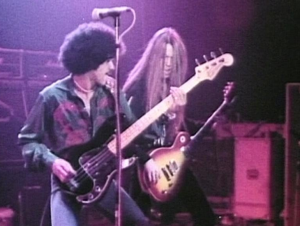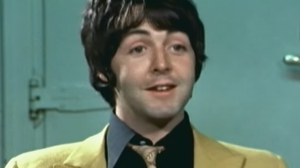The Classic Rock Songs That Tries To Predict The End Of Humanity

Metallica live in 1985 - Metallica / Youtube
Classic rock, with its timeless themes and powerful melodies, has often explored the darker side of human existence and the specter of apocalypse. In this post, we’ll delve into three iconic tracks that prophetically envision the demise of humanity. These songs, through their evocative lyrics and haunting melodies, offer a unique perspective on our collective fears and hopes.
While many have turned to news outlets and social media for updates on the current state of the world, music has offered a unique perspective on these pressing concerns. By tapping into our collective subconscious, classic rock songs have provided a soundtrack for our anxieties, allowing us to confront our fears and find solace in the shared experience of human vulnerability.
In this exploration, we will delve into three classic rock songs that prophetically paint a picture of the world’s end. These songs, through their evocative lyrics and haunting melodies, offer a glimpse into the depths of human despair and the enduring hope that persists even in the face of impending catastrophe.
“It’s The End Of The World As We Know It (And I Feel Fine)” by R.E.M. from Document (1987)
This high-energy track from an indie rock band hailing from Athens, Georgia, spins a unique take on apocalyptic themes, infusing them with a surprising sense of optimism. Far from being a downbeat dirge, the song feels almost celebratory, as if inviting listeners to revel in the chaos of impending disaster.
The lead vocalist delivers a rapid-fire inventory of people, places, and events, creating a sprawling tapestry of modern life on the brink of collapse. This approach resembles Bob Dylan’s “Subterranean Homesick Blues,” with its stream-of-consciousness style that feels like a frantic attempt to document everything before it’s all swept away by calamity.
Lines from the song paint a vivid picture of the world teetering on the edge, filled with earthquakes, wild creatures, and cultural icons, all amidst a backdrop of escalating tension. The lyrics convey a mix of urgency and resilience, highlighting a blend of fear and defiance as society faces its reckoning.
“(Don’t Fear) The Reaper” by Blue Oyster Cult from Agents of Fortune (1976)
Peering into the inevitability of death, this track from Blue Oyster Cult delivers a message of reassurance rather than dread. The song suggests that confronting the end need not be a source of fear. Instead, it invites listeners to embrace the idea that love is an eternal force that transcends mortality, offering comfort in the face of life’s ultimate conclusion.
With a perspective that likens the permanence of love to the natural cycles of the seasons, the lyrics advocate for a serene acceptance of our own mortality. By comparing our experience to the fearlessness of nature’s elements—the wind, the sun, and the rain—the song emphasizes that, just as these forces exist without fear of change, so too can we find peace in the face of death.
The repeated invitation to not fear the reaper is underscored by a call to unity and connection. The vocalist’s lyrics encourage embracing a sense of togetherness and shared destiny, suggesting that through love and partnership, we can transcend the finality of death and find solace.
“The Four Horsemen” by Metallica from Kill ‘Em All (1983)
Imagining the end times through a heavy metal lens, this track channels the dread of the Four Horsemen of the Apocalypse, as foretold in the New Testament. Conquest, War, Famine, and Death are summoned in a dramatic portrayal of the world’s final days. The Los Angeles-based heavy metal band embraces this ominous theme, weaving it into a dark and powerful anthem.
The lyrics vividly describe the approach of these harbingers of doom, riding on “leather steeds” through the night to claim their dominion. The impending arrival of the horsemen is presented as an inevitable force, emphasizing the inescapable nature of their mission.
In the narrative, the listener is confronted with the reality of their own mortality, portrayed as a predetermined and relentless fate. The song speaks to a perpetual state of dying that begins at birth, underscoring the inescapable struggle that lies ahead.














